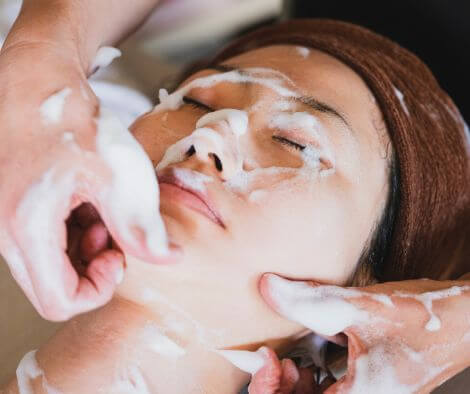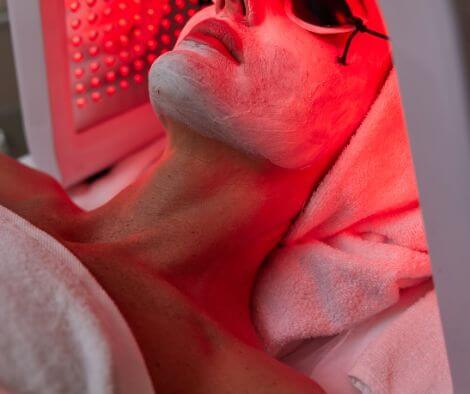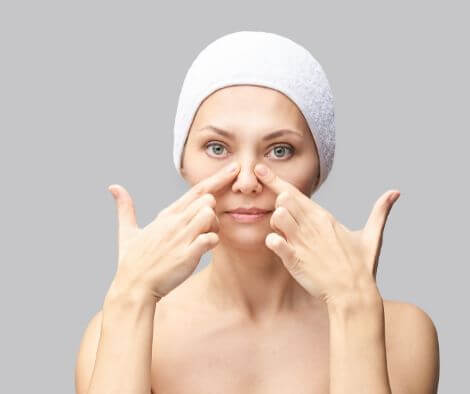Did you know that popular Korean skin treatments have skyrocketed in popularity worldwide? People are eager to achieve flawless and youthful skin like their favorite K-pop idols. However, while these treatments promise amazing results, have you ever wondered about the potential side effects they may carry? In this article, we will explore the possible side effects of popular Korean skin treatments, ensuring that you are well-informed about the risks before diving into the world of K-beauty.

I. Chemical Peels
Chemical peels are a popular Korean skin treatment aimed at improving the appearance and texture of the skin. While they can be effective in treating various skin concerns, it is important to be aware of the potential side effects that may arise.
1. Skin irritation
One of the common side effects of chemical peels is skin irritation. The chemicals used in the peel can cause redness, itching, and a burning sensation on the skin. This is typically a temporary side effect that subsides over time.
2. Redness
Chemical peels can also cause redness of the skin. The level of redness can vary depending on the depth and strength of the chemical peel used. It is important to follow post-treatment care instructions to minimize this side effect and allow the skin to heal properly.
3. Swelling
After a chemical peel, you may experience swelling in the treated area. This is a normal reaction and is usually mild and temporary. However, in some cases, excessive swelling may occur, which should be addressed by a medical professional.
4. Infection
Although rare, there is a potential risk of infection following a chemical peel. It is crucial to keep the treated area clean and follow proper hygiene practices to minimize the risk of infection. If you notice any signs of infection, such as excessive redness, pus, or increasing pain, it is important to seek medical attention immediately.
II. Microdermabrasion
Microdermabrasion is another popular Korean skin treatment that aims to exfoliate the outermost layer of the skin and promote cellular turnover. While it is generally considered safe, there are some potential side effects to be aware of.
1. Skin sensitivity
Microdermabrasion can temporarily increase skin sensitivity, making the skin more prone to irritation and redness. It is important to protect the treated skin from excessive sun exposure and to follow post-treatment care instructions to minimize any discomfort.
2. Dryness
After a microdermabrasion treatment, you may experience temporary dryness of the skin. This can be managed by applying a gentle moisturizer and avoiding harsh skincare products that may further dry out the skin.
3. Discoloration
In rare cases, microdermabrasion may cause temporary discoloration of the skin. This can manifest as patches of darker or lighter skin. It is important to protect the treated skin from sun exposure and to follow proper aftercare instructions to allow the skin to heal properly.
4. Bruising
Some individuals may experience mild bruising after a microdermabrasion treatment. This is usually temporary and will fade over time. It is important to avoid any activities that may further traumatize the skin and to apply gentle skincare products to minimize bruising.

III. Laser Treatments
Laser treatments are highly sought-after Korean skin treatments for various skin concerns, such as hyperpigmentation and scarring. However, it is important to be aware of the potential side effects associated with laser treatments.
1. Hyperpigmentation
One of the potential side effects of laser treatments is hyperpigmentation. This refers to the darkening of the skin in the treated area. This side effect is usually temporary but can be minimized by avoiding sun exposure and following post-treatment care instructions.
2. Hypopigmentation
In some cases, laser treatments may cause hypopigmentation, which is the lightening of the skin in the treated area. Like hyperpigmentation, this side effect is usually temporary but can be minimized by proper sun protection and following aftercare instructions.
3. Scarring
While rare, there is a small risk of scarring associated with laser treatments. It is important to choose a skilled and experienced professional to perform the treatment to minimize this risk. Proper aftercare, such as keeping the treated area clean and avoiding picking or scratching the skin, can also help prevent scarring.
4. Pain
Laser treatments can be uncomfortable, and some individuals may experience pain during the procedure. However, most professionals use numbing creams or cooling techniques to minimize discomfort. It is important to communicate any pain or discomfort with the professional performing the treatment.
IV. Platelet-Rich Plasma (PRP) Therapy
Platelet-Rich Plasma (PRP) therapy is a Korean skin treatment that involves using the patient’s own blood to stimulate collagen production and rejuvenate the skin. While considered safe, there are potential side effects that should be understood.
1. Infection
There is a small risk of infection associated with PRP therapy, as the treatment involves an injection into the skin. It is important to choose a reputable and sanitary clinic to ensure proper sterilization techniques are followed, reducing the risk of infection.
2. Bruising
Bruising is a common side effect of PRP therapy, as the treatment involves injecting the skin with a needle. The bruising is typically temporary and will fade over time. Applying a cold compress and avoiding blood-thinning medications before the treatment can help minimize bruising.
3. Allergic reaction
Although rare, some individuals may have an allergic reaction to the components used in PRP therapy. It is important to inform the medical professional performing the treatment of any known allergies or sensitivities to ensure the treatment is safe for you.
4. Nerve injury
In rare instances, nerve injury may occur during the injection process of PRP therapy. This can result in numbness or tingling sensations in the treated area. It is crucial to choose a skilled and experienced medical professional to perform the treatment to minimize this risk.

V. Botox Injections
Botox injections are a popular Korean skin treatment for reducing the appearance of wrinkles and fine lines. While generally considered safe, there are potential side effects to be aware of.
1. Muscle weakness
Muscle weakness is a temporary side effect of Botox injections, as the treatment works by relaxing the targeted muscles. It is important to avoid any activities that may strain the treated muscles and to follow proper aftercare instructions to minimize discomfort.
2. Drooping eyelids
In some cases, Botox injections may cause temporary drooping of the eyelids. This side effect is usually temporary and will resolve on its own. It is important to choose a skilled and experienced professional to perform the treatment to reduce the risk of eyelid drooping.
3. Headache
Although rare, some individuals may experience a headache after receiving Botox injections. This is usually mild and temporary, but if you experience severe or persistent headaches, it is important to inform the medical professional who performed the treatment.
4. Flu-like symptoms
In rare instances, individuals may experience flu-like symptoms after receiving Botox injections. These symptoms can include fever, fatigue, and muscle aches. It is crucial to notify the medical professional if you experience any unusual or severe symptoms.
VI. Dermal Fillers
Dermal fillers are a popular Korean skin treatment used to restore volume and smooth out wrinkles and fine lines. While generally safe, there are potential side effects to be aware of.
1. Swelling
Swelling is a common side effect of dermal filler injections, as the treatment involves injecting a substance into the skin. The swelling is typically temporary and will subside within a few days. Applying a cold compress and avoiding strenuous activities can help minimize swelling.
2. Bruising
Bruising is another common side effect of dermal filler injections. It occurs due to the needle piercing the skin, leading to minor blood vessel trauma. The bruising is usually temporary and will fade over time. Avoiding blood-thinning medications prior to the treatment can help minimize bruising.
3. Itching
In some cases, individuals may experience itching at the injection site after receiving dermal filler injections. This is usually temporary and will subside on its own. Avoiding scratching or rubbing the treated area can help prevent further discomfort.
4. Allergic reaction
Although rare, some individuals may have an allergic reaction to the substances used in dermal fillers. It is important to inform the medical professional performing the treatment of any known allergies or sensitivities to ensure a safe and suitable filler is used.
VII. Aqua Peel
Aqua peel is a Korean skin treatment that combines exfoliation, cleansing, and hydration to improve the overall appearance of the skin. While generally regarded as safe, there are potential side effects to consider.
1. Skin dryness
After an aqua peel treatment, you may experience temporary skin dryness. This is typically due to the exfoliation process and will resolve as the skin regenerates. Applying a hydrating moisturizer can help alleviate any dryness.
2. Redness
Redness is a common side effect of an aqua peel treatment, as the exfoliation and cleansing process can temporarily increase blood flow to the skin. This redness is typically temporary and will fade over time. Applying a soothing and calming skincare product can help minimize redness.
3. Irritation
In some cases, individuals may experience skin irritation after an aqua peel treatment. This can manifest as itching, stinging, or a burning sensation. It is important to follow proper aftercare instructions and avoid harsh skincare products to minimize irritation.
4. Peeling
After an aqua peel treatment, you may experience peeling as the exfoliated skin cells shed. This is a normal part of the skin’s renewal process and will reveal fresh, rejuvenated skin underneath. It is important to avoid picking or scrubbing at the peeling skin to allow it to shed naturally.
VIII. High-Frequency Facial
A high-frequency facial is a Korean skin treatment that utilizes electric currents to stimulate collagen production and promote healthy skin. While generally safe, there are potential side effects to be aware of.
1. Tingling sensation
During a high-frequency facial, you may experience a tingling sensation on the skin. This is a normal and expected side effect of the treatment and typically subsides once the treatment is completed. It is important to inform the professional performing the treatment if the tingling sensation becomes uncomfortable or painful.
2. Dryness
Some individuals may experience temporary dryness of the skin after a high-frequency facial. This can be managed by applying a hydrating moisturizer and avoiding harsh skincare products that may further dry out the skin.
3. Skin rash
In rare cases, a skin rash may develop after a high-frequency facial treatment. This can occur due to irritation or an allergic reaction to the products used during the treatment. It is important to inform the professional performing the treatment of any known allergies or sensitivities to avoid any potential adverse reactions.
4. Shock
Improper use or faulty equipment can potentially result in an electric shock during a high-frequency facial treatment. To minimize this risk, it is crucial to choose a reputable and experienced professional to perform the treatment and ensure that all equipment is properly maintained and functioning.
IX. LED Light Therapy
LED light therapy is a Korean skin treatment that uses different wavelengths of light to address various skin concerns. While generally considered safe, there are potential side effects to be aware of.
1. Eye damage
Protecting the eyes is crucial during LED light therapy, as exposure to certain wavelengths of light can potentially damage the eyes. It is important to wear protective goggles or eye shields during the treatment to minimize the risk of eye damage.
2. Headache
In some instances, individuals may experience a headache after LED light therapy. This is usually temporary and will subside on its own. If you experience severe or persistent headaches, it is important to inform the professional overseeing the treatment.
3. Skin irritation
LED light therapy may cause temporary skin irritation, such as redness or itching. This is typically mild and subsides over time. Applying a gentle moisturizer and avoiding harsh skincare products can help minimize any discomfort.
4. Fatigue
Extended exposure to LED lights during the treatment may cause temporary fatigue in some individuals. It is important to rest and hydrate after the treatment to alleviate any feelings of fatigue.
X. Gold Facial
Gold facial is a Korean skin treatment that involves applying a thin layer of gold onto the skin to promote a smoother and more radiant complexion. While considered luxurious, there are potential side effects to consider.
1. Skin rash
In rare cases, individuals may develop a skin rash after a gold facial treatment. This can occur due to irritation or an allergic reaction to the gold or other ingredients used in the treatment. It is important to inform the professional performing the treatment of any known allergies or sensitivities to avoid any potential adverse reactions.
2. Allergic reaction
Some individuals may have an allergic reaction to the gold used in the facial treatment. Symptoms of an allergic reaction can include itching, redness, and swelling. It is crucial to inform the professional performing the treatment of any known allergies or sensitivities to ensure a safe and suitable treatment is provided.
3. Metallic residue on skin
After a gold facial treatment, there may be a residue of gold particles left on the skin. This can be a temporary side effect and is typically removed during the post-treatment cleansing process. It is important to follow proper aftercare instructions to ensure all residue is thoroughly removed from the skin.
4. Expensive
One of the considerations when opting for a gold facial is the cost. Gold facial treatments can be expensive compared to other skincare treatments. It is important to weigh the potential benefits against the cost and consider your budget before deciding on this treatment option.
In conclusion, while popular Korean skin treatments offer various benefits, it is essential to be aware of the potential side effects. Each treatment carries its own set of risks and considerations. Consulting with a qualified professional and following proper aftercare instructions can help minimize the potential for adverse reactions and maximize the benefits of these treatments. Remember to prioritize your skin’s health and safety when considering any skincare procedure.

